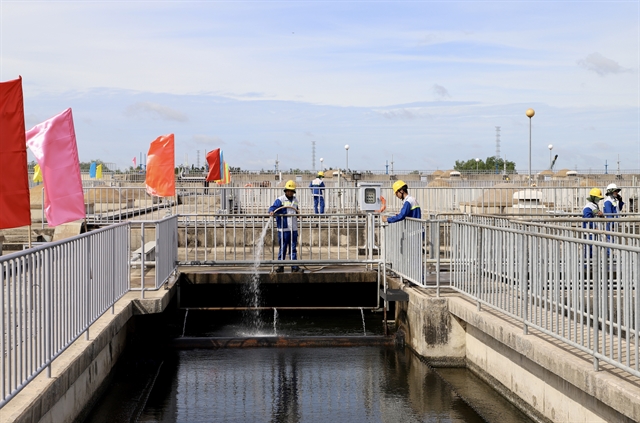Việt Nam’ s largest wastewater treatment plant opens in HCM City
Society – Economy - Ngày đăng : 16:55, 31/08/2024
 |
| The Bình Hưng wastewater treatment plant and collection network expansion project, the largest of its kind in Việt Nam to date, officially opens HCM City on August 30. — VNA/VNS Photo Hồng Giang |
HCM CITY — Bình Hưng wastewater treatment plant and collection network expansion project, the largest of its kind in Việt Nam to date, was officially put into operation in HCM City on Friday (August 30).
The city’s Department of Construction held an inauguration ceremony for the Bình Hưng wastewater treatment plant and collection network expansion project in Bình Chánh District, as part of Phase 2 of the city’s water environment improvement project.
Speaking at the inauguration ceremony, Lương Minh Phúc, director of the city’s Transportation Works Construction Investment Project Management Authority, said the expansion project raised the plant’s treatment capacity to 469,000cu.m of wastewater per day.
It has a total investment of nearly VNĐ11.3 trillion (US$452 million) sourced from Japanese ODA loans via the Japan International Cooperation Agency (JICA) and domestic counterpart funds.
This allows the city to manage wastewater across a wider area of more than 2,500ha in eight districts of 4, 5, 6,7, 8, 10, 11 and Bình Chánh, serving around 1.8 million people.
“The facility is not just a wastewater treatment plant, it also includes more than 10ha of trees and serves as an environmental monitoring training centre,” he said.
The Centre for Technical Infrastructure Management under the city’s Department of Construction has been assigned to manage and operate the plant.
Bùi Xuân Cường, vice chairman of the municipal People's Committee, attended the event and thanked the local government and relevant agencies for concerted efforts to remove barriers so that the expansion project can be completed as scheduled.
“The city always prioritises environmental protection, increasing green spaces, waste and wastewater treatment, canal renovation, and improving the lives of people living along and near canals,” he said.
The city aims to collect and treat all domestic wastewater in 12 drainage basins, with a total volume of about three million cubic metres per day by 2030.
It also targets to collect and treat 100 per cent of the city’s waste using waste-to-energy and recycling technologies.
The operation of the expanded Bình Hưng wastewater treatment plant will increase the city’s wastewater collection and treatment rate from 20.6 per cent to 40.8 per cent.
It is expected to reach 71.3 per cent by 2025 after under-construction Nhiêu Lộc - Thị Nghè wastewater treatment plant, with a capacity of 480,000cu.m per day, comes into operation.
The Nhiêu Lộc - Thị Nghè wastewater treatment plant project, which will be the largest in Southeast Asia, is expected to be put into use in June of 2025.
To ensure the effectiveness of the second phase of the city's water environment improvement project, he asked the investor and related units to continue to coordinate with JICA to seek the opinions of related ministries and agencies to resolve the project's issues.
He urged investment for the city’s water environment improvement project-Phase 3, which is expected to start construction in 2026 and be completed by 2030.
He asked the Japanese Government and JICA to maintain their collaboration and support for the successful execution of Phase 3. — VNS
